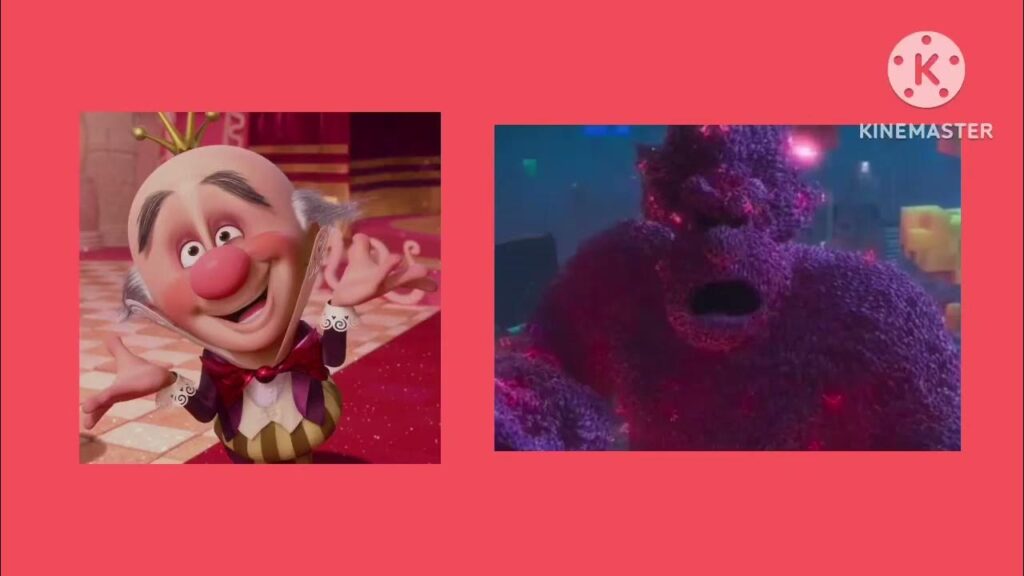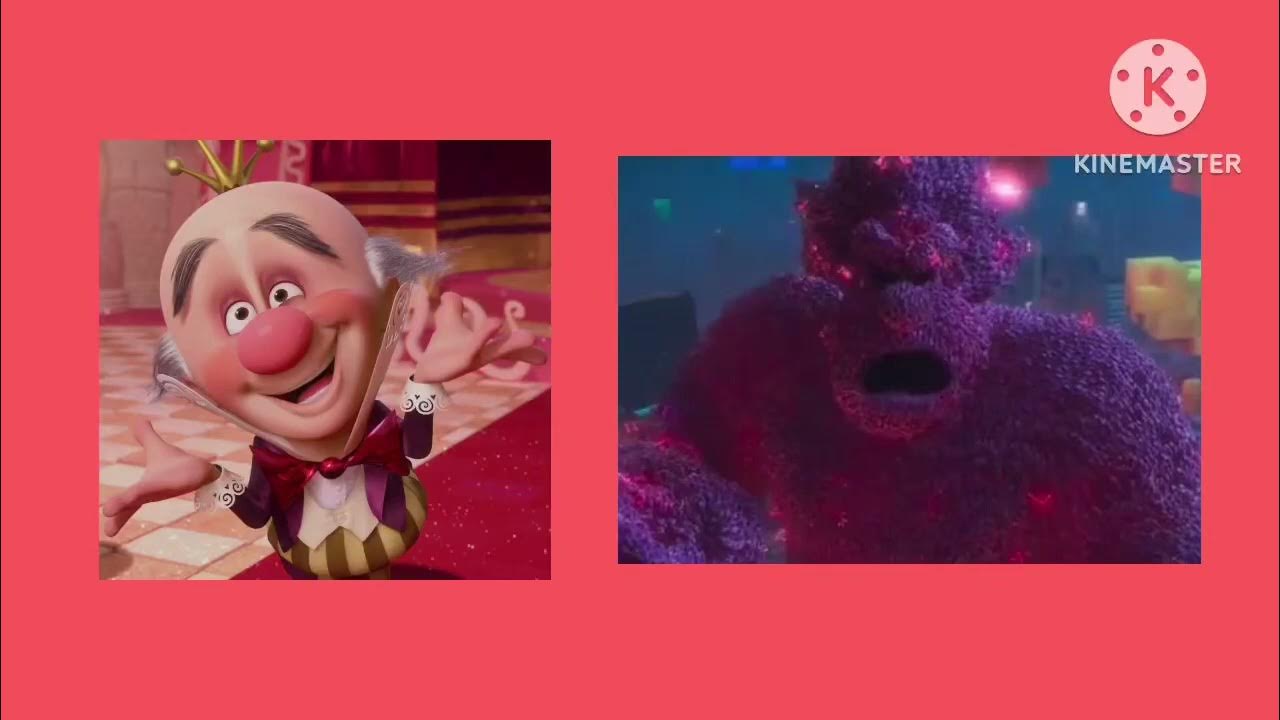
Unpacking the Complexity of the Villain from Wreck-It Ralph: Who is the Real Bad Guy?
Disney’s Wreck-It Ralph, released in 2012, charmed audiences with its vibrant animation, clever premise, and heartwarming story. Centered around Ralph, the misunderstood “bad guy” of the arcade game Fix-It Felix Jr., the film explores themes of identity, friendship, and the search for purpose. However, the question of who truly embodies the role of the villain from Wreck-It Ralph is more nuanced than it initially appears. While King Candy/Turbo presents himself as the primary antagonist, a closer examination reveals a more complex moral landscape.
King Candy/Turbo: The Obvious Antagonist
At first glance, King Candy, the ruler of Sugar Rush, seems to be the archetypal villain from Wreck-It Ralph. Voiced with manic energy by Alan Tudyk, King Candy is initially presented as a quirky, if somewhat eccentric, leader. He’s obsessed with maintaining order in his candy-themed kingdom and seems genuinely concerned about the well-being of his citizens. However, this facade quickly crumbles to reveal his true identity: Turbo, a racer from an older arcade game who, consumed by jealousy, sabotaged his own game and another, resulting in both being unplugged. Turbo’s actions directly mirror real-world events in the gaming industry, where competition can turn fierce and even destructive.
Turbo’s Motivations and Methods
Turbo’s motivations are rooted in a deep-seated insecurity and a desperate need for attention. He couldn’t bear the thought of being overshadowed by a newer, more popular game. This jealousy drove him to ‘turbo-charge’ other games, disrupting their functionality and ultimately leading to their demise. In Wreck-It Ralph, he resurfaces as King Candy, having hijacked the Sugar Rush game and rewritten its code to prevent Vanellope von Schweetz, the rightful ruler, from racing and reclaiming her throne. His methods are manipulative, deceitful, and ultimately tyrannical. He brainwashes the citizens of Sugar Rush, convincing them that Vanellope is a glitch and a threat to their world. He deploys his henchmen, including Sour Bill, to enforce his rule and maintain the illusion of order. His actions have a devastating impact on Vanellope, who is ostracized and forced to live as an outcast.
The Threat of Game Over
Turbo’s ultimate goal is to prevent Vanellope from crossing the finish line in a race, as this would trigger a system reset, revealing his identity and potentially leading to Sugar Rush being unplugged. He believes that by keeping Vanellope suppressed, he can maintain his power and avoid the fate that befell his own game. This fear of obsolescence and the lengths he goes to in order to prevent it underscore the darker aspects of his character. The film uses Turbo’s actions to explore themes of control, power, and the dangers of unchecked ambition. His villainy is not merely about being a “bad guy;” it’s about actively suppressing others to maintain his own position.
Ralph: The Unintentional Antagonist?
While King Candy/Turbo is the clear antagonist, Ralph himself is not without his flaws. Initially driven by a desire to be seen as a hero and escape the stigma of being the “bad guy,” Ralph inadvertently creates chaos and destruction in his quest for a medal. His actions in Hero’s Duty, a first-person shooter game, unleash a swarm of Cy-Bugs, a parasitic species that threatens to consume all the games in the arcade. This highlights the unintended consequences of his actions and raises the question of whether his own ego and self-centeredness contribute to the overall conflict. [See also: The Evolution of Wreck-It Ralph’s Character]
Ralph’s Naivete and Destructive Tendencies
Ralph’s naivete and lack of understanding about the interconnectedness of the game world lead him to make rash decisions. He doesn’t fully grasp the danger of the Cy-Bugs or the potential consequences of his actions until it’s almost too late. His destructive tendencies, born from years of being ostracized and unappreciated, are initially channeled into his role as the “bad guy” in Fix-It Felix Jr. However, when he seeks to break free from this role, he struggles to control his strength and often causes more harm than good. This internal conflict makes him a compelling character, but it also complicates the question of who the true villain from Wreck-It Ralph really is. He is a villain from Wreck-It Ralph, but not in the same way as Turbo.
Redemption Through Self-Sacrifice
Ultimately, Ralph redeems himself by acknowledging his mistakes and sacrificing his own happiness for the greater good. He realizes that true heroism lies not in winning a medal or gaining recognition, but in protecting others and doing what is right, even when it’s difficult. His climactic act of self-sacrifice, where he destroys the Mentos stalactite to trigger the volcanic eruption and destroy all the Cy-Bugs, solidifies his transformation from a misunderstood “bad guy” to a genuine hero. This act of heroism proves that Ralph is not a true villain from Wreck-It Ralph.
Vanellope: Victim or Catalyst?
Vanellope von Schweetz, the glitch and aspiring racer, is initially presented as a victim of King Candy’s manipulation. However, her own rebellious spirit and determination to race also contribute to the conflict. While she is undoubtedly a sympathetic character, her unwavering desire to compete, despite the risks, can be seen as a catalyst for the events that unfold. Her very existence is a threat to Turbo’s power, and her refusal to be silenced fuels his villainous actions. [See also: The Symbolism of Vanellope’s Glitch]
The Power of Determination
Vanellope’s determination to race is both admirable and problematic. On one hand, it represents her refusal to be defined by her glitch and her desire to pursue her dreams. On the other hand, it puts her in direct conflict with King Candy and exposes her to danger. Her stubbornness, while endearing, can also be seen as a contributing factor to the chaos that ensues. This complexity adds another layer to the moral landscape of the film. She is a victim and a hero, but her actions also have consequences.
The Importance of Acceptance
Ultimately, Vanellope’s story is one of acceptance and self-discovery. She learns to embrace her glitch and understand its unique power. She also learns the importance of friendship and the value of community. Her transformation from an outcast to the president of Sugar Rush is a testament to her resilience and her ability to overcome adversity. This arc is crucial to understanding the themes of the film and the message that true strength lies in embracing one’s individuality.
The Nuances of Villainy in Wreck-It Ralph
In conclusion, the question of who is the true villain from Wreck-It Ralph is not a simple one. While King Candy/Turbo is the obvious antagonist, Ralph’s unintentional actions and Vanellope’s determination also contribute to the conflict. The film explores the complexities of good and evil, highlighting the fact that even the most well-intentioned characters can make mistakes and that even the most villainous characters can have their own motivations. The brilliance of Wreck-It Ralph lies in its ability to challenge our preconceived notions about heroes and villains, forcing us to consider the nuances of morality and the importance of empathy. The villain from Wreck-It Ralph is not a singular entity, but a collection of flaws, motivations, and consequences that shape the narrative and make it so compelling. Understanding the villain from Wreck-It Ralph requires understanding the underlying motivations of all characters. The villain from Wreck-It Ralph also showcases the dangers of unchecked ambition. The villain from Wreck-It Ralph, King Candy, serves as a cautionary tale. Ralph’s journey highlights that even a villain from Wreck-It Ralph can find redemption. The film asks: what truly defines a villain from Wreck-It Ralph? Analyzing the villain from Wreck-It Ralph reveals complex character development. The villain from Wreck-It Ralph is a multifaceted character. Another layer to the villain from Wreck-It Ralph is added by Ralph’s actions. Examining the villain from Wreck-It Ralph helps to understand the movie’s themes. Ultimately, the villain from Wreck-It Ralph forces reflection on morality and empathy.

